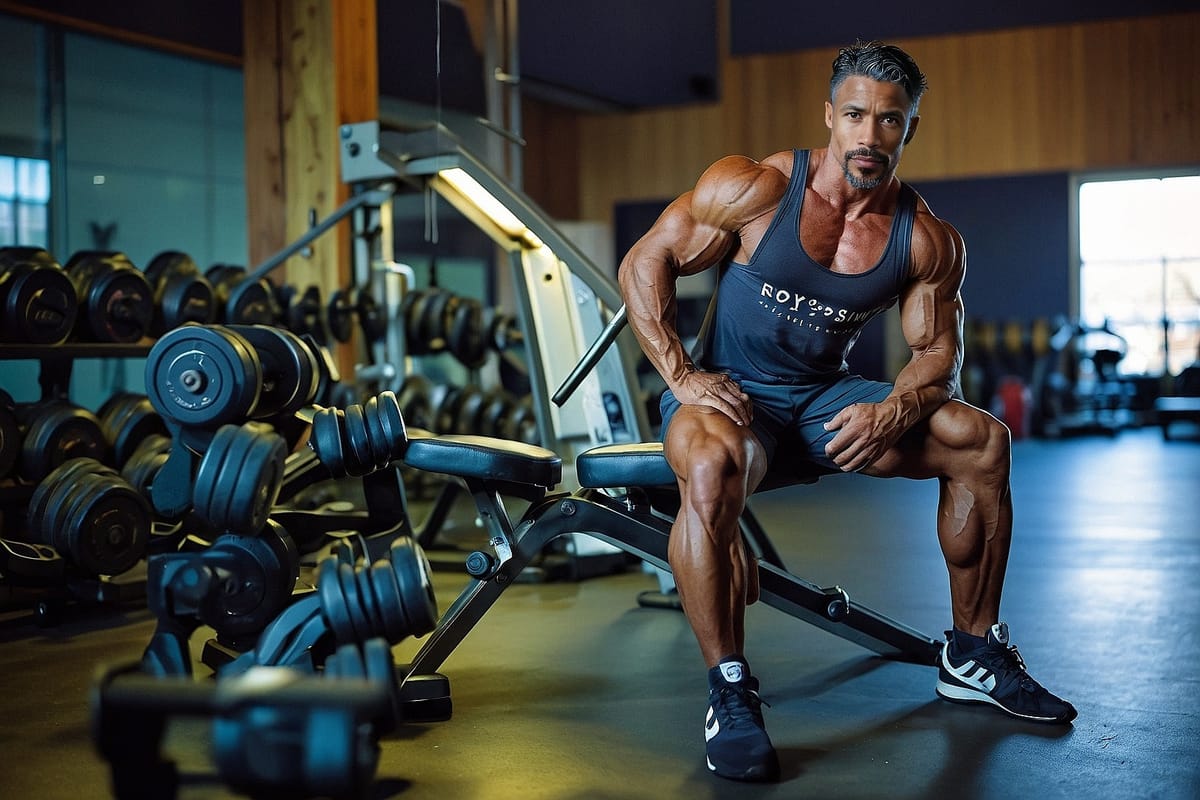Scientists Just Discovered the #1 Muscle Growth Hack (Most Lifters Do It Wrong)

Introduction: Optimizing Muscle Hypertrophy Through Science-Based Training
If you’re looking to maximize muscle growth, understanding the science behind hypertrophy is crucial. Recent research has provided valuable insights into how different exercises can specifically target muscle growth in areas like the quads, calves, triceps, and biceps. This guide will walk you through practical steps to incorporate these findings into your workout routine, ensuring you achieve the best possible results.
Key Insights from Recent Hypertrophy Research
Study Overview: A recent study recruited 28 trained individuals to compare the effectiveness of different exercises on muscle growth. The exercises compared were the leg press vs. leg extension for the quads and straight-leg vs. bent-leg calf raises for the calves. Each participant used one leg for one exercise and the other leg for the alternative, ensuring controlled variables such as genetics, nutrition, and lifestyle.
Results:
- Quadriceps Growth:
- Rectus Femoris: Showed better growth with the leg extension.
- Vastus Lateralis: Grew more effectively with the leg press.
- Calf Muscle Growth:
- Medial Gastrocnemius: Favored the straight-leg calf raise.
- Lateral Gastrocnemius: Also showed a preference for the straight-leg calf raise.
- Soleus: Displayed slightly better growth with the bent-leg calf raise, though the difference was minimal.
Practical Application: Structuring Your Workouts for Optimal Muscle Growth
Based on these findings, here’s how you can structure your workout routine to maximize muscle hypertrophy:
1. Quadriceps Development To effectively grow your quads, incorporate both leg presses and leg extensions into your routine:
- Leg Extensions: Focus on isolated knee extensions to specifically target the rectus femoris, a muscle that doesn’t fully engage during compound movements like the leg press.
- Leg Presses: Utilize this compound movement to effectively engage and grow the vastus lateralis and other quadriceps muscles.
Sample Workout Routine:
- Leg Extensions: 3 sets of 10-12 reps
- Leg Presses: 4 sets of 8-10 reps
2. Calf Development For comprehensive calf development, include both straight-leg and bent-leg calf raises:
- Straight-Leg Calf Raises: These target the gastrocnemius more effectively by keeping the knee extended, ensuring the muscle is in a longer position during the exercise.
- Bent-Leg Calf Raises: Useful for isolating the soleus, which is better activated when the knee is bent.
Sample Workout Routine:
- Straight-Leg Calf Raises: 4 sets of 12-15 reps
- Bent-Leg Calf Raises: 3 sets of 12-15 reps
3. Triceps Growth To maximize triceps hypertrophy, focus on exercises that lengthen the muscle:
- Overhead Triceps Extensions: These involve shoulder flexion, which puts the long head of the triceps in a stretched position, promoting better growth.
- Pushdowns: Can still be included but are less effective for the long head compared to overhead extensions.
Sample Workout Routine:
- Overhead Triceps Extensions: 3 sets of 8-12 reps
- Triceps Pushdowns: 3 sets of 10-12 reps
4. Biceps Development Though controversial, isolating biceps with direct exercises like curls may be more effective than compound pulling exercises for optimal hypertrophy:
- Bicep Curls (e.g., dumbbell or barbell curls): Focus on isolated elbow flexion to fully engage the biceps without interference from other muscle groups.
- Chin-Ups: Can be included but may not optimally target the biceps compared to isolated movements.
Sample Workout Routine:
- Bicep Curls: 4 sets of 8-12 reps
- Chin-Ups: 3 sets to failure
Understanding the Principles: Why These Exercises Work
Principle 1: Suboptimal Hypertrophy in Biarticular Muscles Biarticular muscles, such as the rectus femoris and triceps long head, may not grow optimally during compound exercises due to their involvement in multiple joint movements. This can cause the muscle to partially resist the movement, leading to less effective hypertrophy. Isolated exercises are therefore necessary to fully target these muscles.
Principle 2: Training at Longer Muscle Lengths Muscles trained at longer lengths tend to experience greater hypertrophy. For example, the gastrocnemius grows better with straight-leg calf raises because the knee is extended, placing the muscle in a more stretched position during the exercise.
Conclusion: Implementing the Science in Your Training
By understanding and applying these principles, you can optimize your workout routine for maximum muscle growth. Incorporate both compound and isolation exercises, focus on training muscles at longer lengths, and ensure your routine is structured to target specific muscles effectively. With this science-based approach, you’re well on your way to achieving your hypertrophy goals.
Sources:
https://link.springer.com/article/10.1007/s42978-024-00299-4





